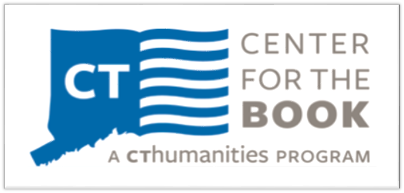Connecticut Among Leaders in Addressing Cyberbullying, Bullying Among Youth
/Connecticut's anti-bullying laws and relatively low number of reported cyberbullying incidents have earned it a spot as one of the top three safest states from cyberbullying, according to a new national survey. Nationwide at least 34 percent of kids have been cyberbullied, but the precise percentages vary from state to state.
A new survey developed by Frontier Communications, marking Child Safety & Prevention Month, assesses the relative safety across the nation. Based on an analysis of six weighted factors (including school sanctions for cyberbullying, existing state bullying laws, school discipline for off-campus behavior, and the percentage of students in grades 9–12 that have reported being cyberbullied), ten states are said to be addressing the issue head on: Florida, Arkansas, Tennessee, Michigan, Pennsylvania, New York, Vermont, Massachusetts, Connecticut, and Washington, DC.
In contrast, Washington, Oregon, Montana, Utah, Arizona, Colorado, Iowa, Wisconsin, and Ohio provide the fewest legal protections against cyberbullying. For example, most of these states don’t have a specific state statute that allows schools to discipline students for off-campus behavior, according to the survey analysis.
The U.S. Department of Health (DOH) defines bullying as repeated “unwanted, aggressive behavior among school children that involves a real or perceived imbalance.” Bullying can involve making threats, spreading rumors, physically attacking someone, or purposely excluding someone from an activity.
Bullying and cyberbullying are major problems - over 3 million students are bullied every year, which contributes to over 160,000 days of absences by students from school, according to Derek Peterson, CEO of Digital Fly, a technology company based on Long Island.
“This is bad for the student, schools, communities, states and our nation,” he said, emphasizing that states have the ability to lead, create policies for reporting, tracking, educating, preventing and punishing those involved in bullying and cyber bullying.
 Connecticut’s “An Act Concerning the Strengthening of School Bullying Laws,” Senate Bill 1138 signed into law in 2011, defines "Cyberbullying" as any act of bullying through the use of the Internet, interactive and digital technologies, cellular mobile telephone or other mobile electronic devices or any electronic communications…” The law states that school policies must “include provisions addressing bullying outside of the school setting if such bullying (A) creates a hostile environment at school for the victim, (B) infringes on the rights of the victim at school, or (C) substantially disrupts the education process or the orderly operation of a school…”
Connecticut’s “An Act Concerning the Strengthening of School Bullying Laws,” Senate Bill 1138 signed into law in 2011, defines "Cyberbullying" as any act of bullying through the use of the Internet, interactive and digital technologies, cellular mobile telephone or other mobile electronic devices or any electronic communications…” The law states that school policies must “include provisions addressing bullying outside of the school setting if such bullying (A) creates a hostile environment at school for the victim, (B) infringes on the rights of the victim at school, or (C) substantially disrupts the education process or the orderly operation of a school…”
 Testifying in support of the Connecticut legislation, state Victim Advocate Michelle Cruz said “we now know the long lasting and devastating effects that bullying behavior can have on victims, bystanders and even bullies.” She cited a study by the Family and Work Institute that reported one-third of children are bullied at least once a month, while six out of ten teens witnessed bullying at least once a day.
Testifying in support of the Connecticut legislation, state Victim Advocate Michelle Cruz said “we now know the long lasting and devastating effects that bullying behavior can have on victims, bystanders and even bullies.” She cited a study by the Family and Work Institute that reported one-third of children are bullied at least once a month, while six out of ten teens witnessed bullying at least once a day.
Attorney General George Jepsen noted that “Students no longer have the refuge of home. Technology makes students easily accessible through cell phones, social networking sites, and online gaming systems long after school closes.” In advocating for the legislation, he said efforts must aim to prevent school from being a “hostile environment for the student” that “impacts their ability to learn and thrive.” And, he added, those efforts must continue when the student leaves the school building.
The DOH defines cyberbullying as “bullying that takes place over digital devices like cell phones, computers, and tablets” and can include any number of activities:
- Spreading rumors online or through texts
- Posting hurtful or threatening messages on social networking sites or web pages
- Posting a mean or hurtful video or picture
- Pretending to be someone else online to hurt another person
- Taking unflattering pictures of a person and sharing them online
- Sexting, or circulating sexually suggestive pictures or messages about a person
Recent statistics show that more than a third of children and teens have experienced cyberbullying, according to the Frontier analysis. Data is available from the National Center for Education Statistics and the Cyberbullying Research Center.



 The mission of the Jordan Porco Foundation, a 501(c) (3) public charity, is to prevent suicide, promote mental health, and create a message of hope for young adults. They accomplish this by providing engaging and uplifting peer-run programs. Their programs strive to start a conversation about mental health that reduces stigma while encouraging help-seeking and supportive behaviors.
The mission of the Jordan Porco Foundation, a 501(c) (3) public charity, is to prevent suicide, promote mental health, and create a message of hope for young adults. They accomplish this by providing engaging and uplifting peer-run programs. Their programs strive to start a conversation about mental health that reduces stigma while encouraging help-seeking and supportive behaviors.



 A synthetic turf study was undertaken in 2016 by four United States agencies — EPA, Consumer Products Safety Commission, the Centers for Disease Control and Prevention/Agency for Toxic Substances and Disease Registry — which has yet to be finalized.
A synthetic turf study was undertaken in 2016 by four United States agencies — EPA, Consumer Products Safety Commission, the Centers for Disease Control and Prevention/Agency for Toxic Substances and Disease Registry — which has yet to be finalized. Blumenthal first became concerned about the artificial surface when his children were playing on the crumb-rubber athletic fields. “I became concerned as a parent, as much as a public official, ten years ago, and at first was somewhat skeptical, but now very firmly believe that we need an authoritative, real study about what’s in these fields,” Blumenthal told ABC News two years ago.
Blumenthal first became concerned about the artificial surface when his children were playing on the crumb-rubber athletic fields. “I became concerned as a parent, as much as a public official, ten years ago, and at first was somewhat skeptical, but now very firmly believe that we need an authoritative, real study about what’s in these fields,” Blumenthal told ABC News two years ago.



 Pieratti, who teaches English at South Windsor High School, relocated to Connecticut from upstate New York five years ago. She said “I have been nurtured by this state since I moved here,” and expressed appreciation to her colleagues in South Windsor. She has taught at the college and high school level, and was recipient of the Idaho prize for Poetry in 2015. Her
Pieratti, who teaches English at South Windsor High School, relocated to Connecticut from upstate New York five years ago. She said “I have been nurtured by this state since I moved here,” and expressed appreciation to her colleagues in South Windsor. She has taught at the college and high school level, and was recipient of the Idaho prize for Poetry in 2015. Her 
 District teams identify one exemplary teacher from within their teaching populations. Each district nominee completes the state application in the ensuing months and submits it to the State Department of Education. Applications are distributed to members of a reading committee, and the results are tabulated to identify approximately fifteen semi-finalists.
District teams identify one exemplary teacher from within their teaching populations. Each district nominee completes the state application in the ensuing months and submits it to the State Department of Education. Applications are distributed to members of a reading committee, and the results are tabulated to identify approximately fifteen semi-finalists.


 Food and beverage companies often target marketing for nutrient-poor products such as candy, sugary drinks, snack foods, and fast-food restaurants to Hispanic audiences, including youth, the researchers state. They cite previous research that has documented disproportionate exposure to unhealthy food marketing by Hispanic youth in their communities and on TV, but theirs is the first examination of the phenomenon on the internet.
Food and beverage companies often target marketing for nutrient-poor products such as candy, sugary drinks, snack foods, and fast-food restaurants to Hispanic audiences, including youth, the researchers state. They cite previous research that has documented disproportionate exposure to unhealthy food marketing by Hispanic youth in their communities and on TV, but theirs is the first examination of the phenomenon on the internet. g vulnerable populations,” according to the publication’s website, “with the goal of providing optimal outcomes and ultimately health equity for all.” The journal intends to provide coverage ranging from translational research to prevention, diagnosis, treatment, and management of disease and illness, in order to serve as a primary resource for organizations and individuals who serve these populations at the community, state, regional, tribal, and national levels.
g vulnerable populations,” according to the publication’s website, “with the goal of providing optimal outcomes and ultimately health equity for all.” The journal intends to provide coverage ranging from translational research to prevention, diagnosis, treatment, and management of disease and illness, in order to serve as a primary resource for organizations and individuals who serve these populations at the community, state, regional, tribal, and national levels.

 his 12 year old son and a friend play a game in their backyard in Fairfield, using a perforated plastic golf ball and a broomstick handle. They had given up on baseball and softball – not enough players for two teams, not enough space for a field, and too many broken windows.
his 12 year old son and a friend play a game in their backyard in Fairfield, using a perforated plastic golf ball and a broomstick handle. They had given up on baseball and softball – not enough players for two teams, not enough space for a field, and too many broken windows. The National Toy Hall of Fame receives thousands of nominations annually. Whiffle Ball was nominated, but not selected, in 2015. The final 2017 toy inductees, chosen on the advice of a national selection advisory committee, will be announced at The Strong museum on Thursday, November 9. Only two or three of these finalists will join other iconic toys in the hall and sit alongside past inductees such as Barbie, LEGO, Monopoly, Rubik’s Cube, and Star Wars action figures.
The National Toy Hall of Fame receives thousands of nominations annually. Whiffle Ball was nominated, but not selected, in 2015. The final 2017 toy inductees, chosen on the advice of a national selection advisory committee, will be announced at The Strong museum on Thursday, November 9. Only two or three of these finalists will join other iconic toys in the hall and sit alongside past inductees such as Barbie, LEGO, Monopoly, Rubik’s Cube, and Star Wars action figures. The Strong’s National Toy Hall of Fame recognizes toys that have engaged and delighted multiple generations, inspiring them to learn, create, and discover through play. Criteria for induction include: Icon-status (the toy is widely recognized, respected, and remembered); Longevity (the toy is more than a passing fad and has enjoyed popularity over multiple generations); Discovery (the toy fosters learning, creativity, or discovery through play); and Innovation (the toy profoundly changed play or toy design).
The Strong’s National Toy Hall of Fame recognizes toys that have engaged and delighted multiple generations, inspiring them to learn, create, and discover through play. Criteria for induction include: Icon-status (the toy is widely recognized, respected, and remembered); Longevity (the toy is more than a passing fad and has enjoyed popularity over multiple generations); Discovery (the toy fosters learning, creativity, or discovery through play); and Innovation (the toy profoundly changed play or toy design).




























